1967 Volvo 1800S: Practical Sports Car and a Klockau Favorite
I’ve always loved Volvos, because they’re what I grew up with, what are among my earliest car-related childhood memories. Most of those cars were safe, solid 240 sedans and wagons, but at that same time, my mom owned a 1973 Volvo 1800ES.

When I first arrived home from the hospital, my parents had a 1979 Pontiac Bonneville sedan and a 1977 Volvo 245DL station wagon. Those were Dad’s and Mom’s primary vehicles, but the 1800ES was a fair-weather car, and it shared the 1929-era garage with Dad’s ’51 Porsche 356 Cabriolet.

It only came out on nice days. I remember Dad driving me to my friend Brian Macomber’s house for a birthday party in this car. It must have been 1985 or so; I was probably in kindergarten. We also took it for runs to Mr. Fresh, which was a drive-thru convenience store only a few blocks from home. We’d zip up, get some bread or milk, and zip back to the house. It was a five-minute ride, max, but I always wanted to go. I loved that car.

In late ’85, however, the 1977 245 wagon was sold to a family friend, and the ’73 1800ES was traded in to Lundahl Volvo, as my mom had special-ordered a new ’86 240 DL wagon in Cream Yellow with brown interior. I was sad, but we just didn’t really need that ES, and the new car needed to go in the garage, so that was that.

I held onto fond memories of that car. Since 1800s weren’t very common in the Quad Cities, I didn’t see any for years, save for one at a show in the late ’90s and a ’71 1800E that popped up at Lundahl Volvo circa 2004.
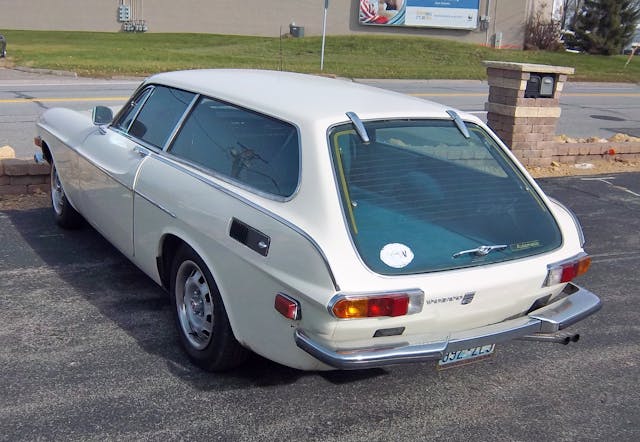
I did see a couple more, including a mildly customized one in Iowa City, but I hadn’t seen any relatively recently until I spied a white ES for sale in Davenport in 2014. It wasn’t perfect, but it was pretty nice (I wrote about it here). I took many photos and showed them to Dad, thinking maybe he’d want to get it. But no dice, unfortunately.
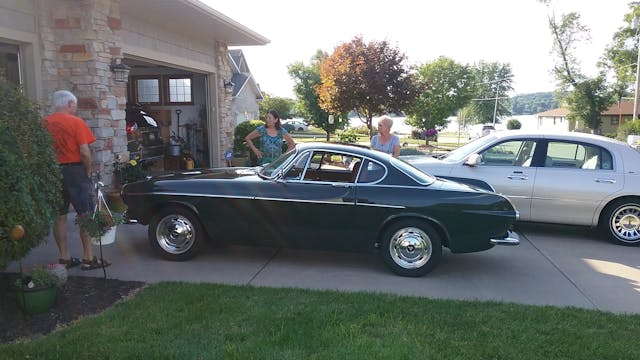
He already owned a ’60 Porsche, and my mom had a Jag XJS convertible—both used as summer drivers—so I understood. But lo and behold, in July 2018, he showed up with our featured car, a ’67 1800S, resplendent in British racing green over saddle tan leather.
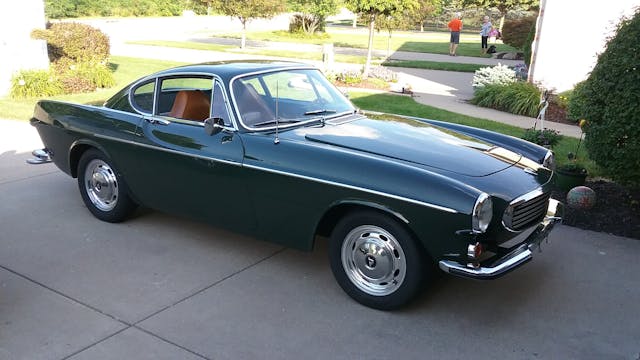
I was so thrilled! It was like being beamed back to my childhood a bit, even though this was a coupe and not an ES wagon. It had been completely restored by a classic Volvo specialist in Schaumburg, and it needed nothing but to be driven.
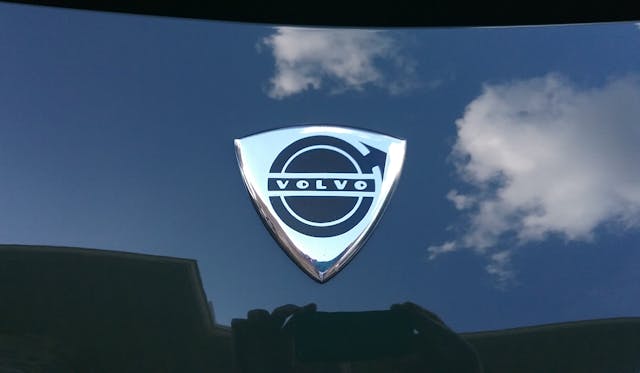
But what of the “Souped-down Ferrari” itself, as Volvo called it in a classic ’60s ad? It goes back to the early postwar years, European cars, and the rise and embracing of exporting.
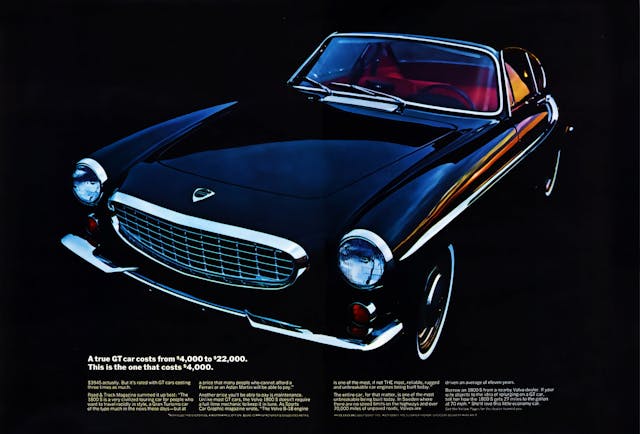
That was the watchword: Export. Volvo, in the ’50s, believed in it dearly, and it was thought that a ‘halo’ car was needed to draw interested parties into Volvo showrooms in other countries—especially the United States.
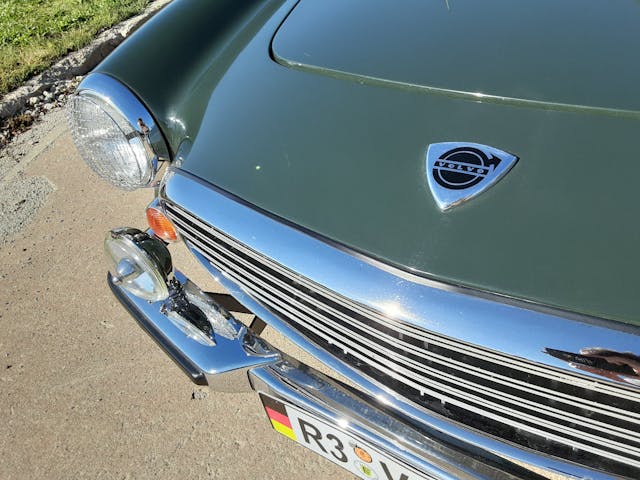
Its first attempt was the Volvo Sports, officially designated the P1900, a two-seat fiberglass roadster in the Corvette manner … but it didn’t take off and had some teething issues, so it only lasted through 1956–57. It was pretty though! I’ve never seen one, but I have a Robeddie white metal 1/43-scale example on my desk at home.
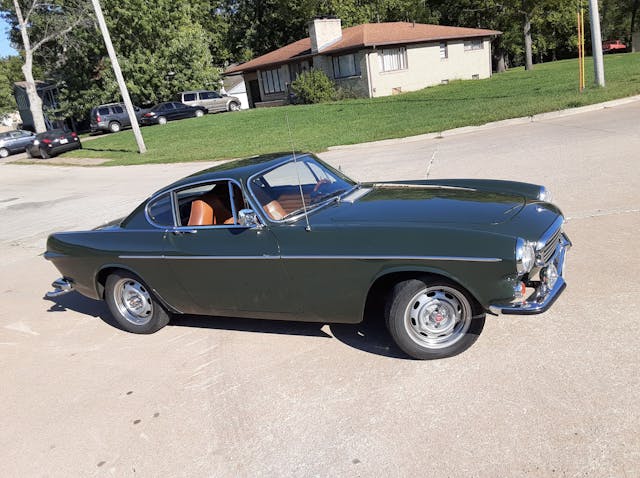
So, Plan B. Which was the P1800. After the P1900 exited stage left, in early ’57 the decision was made to base a new sporty model on the upcoming Amazon/120 series. Prototypes were built by Italian coachbuilder Frua, and while there were several differences detail-wise, the overall look would be familiar to P1800 owners today.
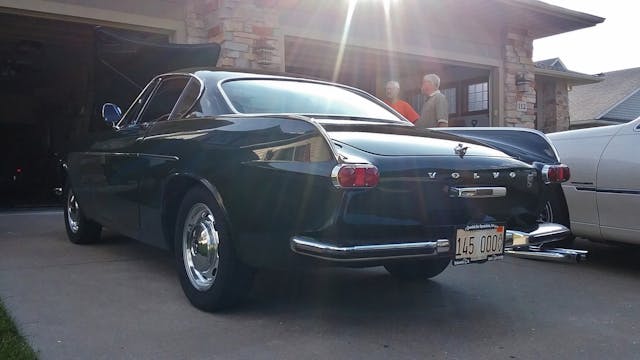
The first official pictures were released in May 1959. The Company stated at the time that the car would begin production towards the end of 1960, but as it turned out it would be delayed. It was displayed for the first time at the Brussels international show in January 1960; one was shown the following April at the New York Auto Show.
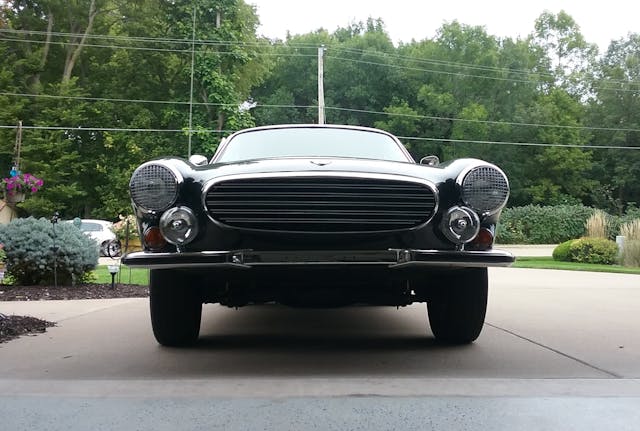
The new 1800 was equipped with the then-new B18B inline four, not the B16B from the PV544 as originally planned. So in keeping with its character, the P1800 had the oomph to go with its sporty, svelte looks. Eventually the same engine would be available on the 544 and P120/Amazon. But the 1800 had it first.
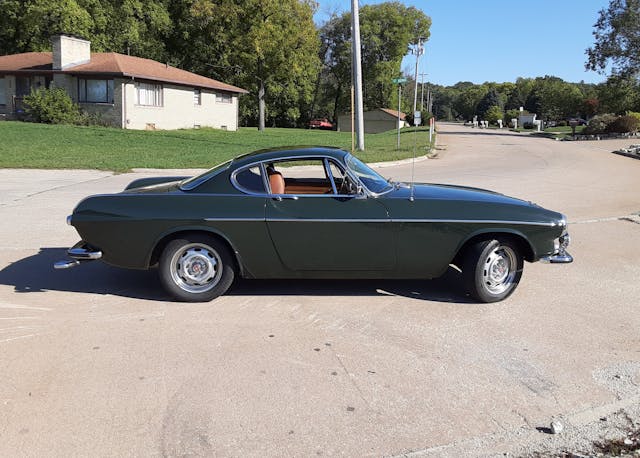
Power on the early versions was 100 horsepower at 5000 rpm. The first production cars appeared in Swedish showrooms in May 1961. These first P1800s were built and finished by Jensen, but issues arose, resulting in the cars being built in Sweden starting in April 1963. At the same time, the designation changed from P1800 to 1800S. The ‘S’ was for Sweden.
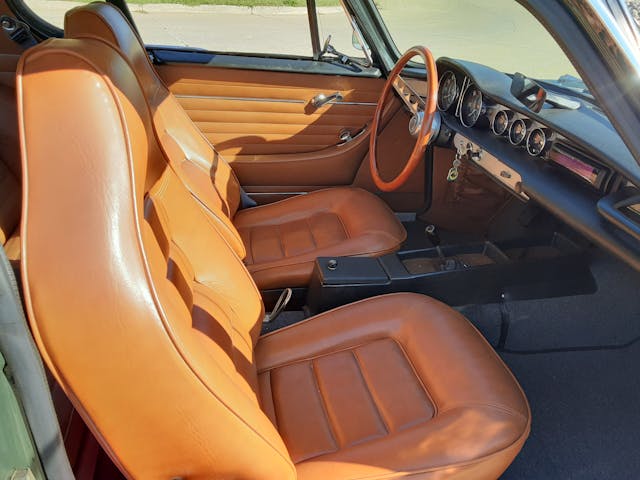
The initial 1800S had a mildly updated engine as well, bumping power to 108 hp. But the biggest win the P1800/1800S had was due to Sir Roger Moore and a classic TV show, The Saint.

As the story went, the producers of the show initially wanted the then-new Jaguar E-Type as the hero’s car. But Jaguar was apparently unhelpful. As Moore told magazine Teknikens Varld at the time, he saw an 1800, fell in love with it, Volvo was called, and the show had a car in five days. The rest, as they say, is history.
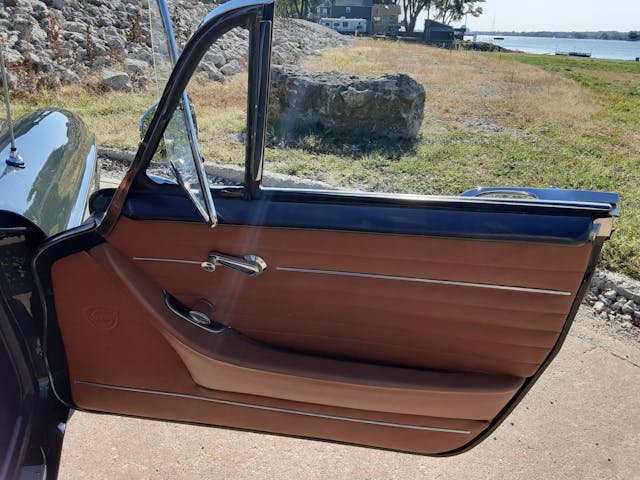
By 1967, the year of our featured car, the B18B engine was 1780 cc, breathed through twin SU carbs, and produced 115 hp at 6000 rpm and 108 lb-ft of torque at 4000 rpm. The bump to 115 hp had been achieved in 1966 via revised exhaust ports.
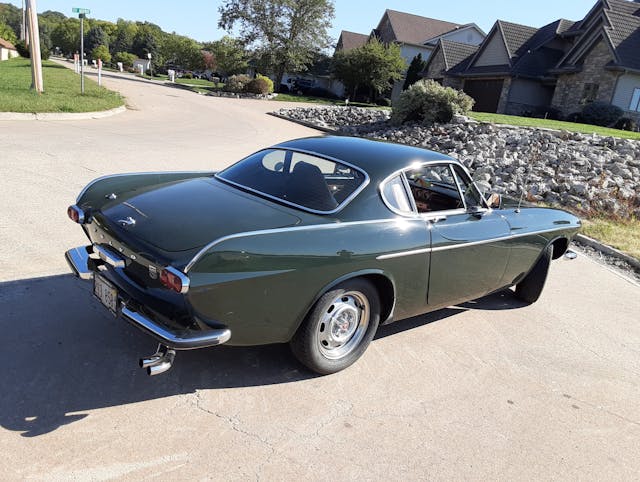
Also new was the straight-across side molding, replacing the earlier trim that curved upward into the top of the door, near the handle. A handsome new grille was also apparent, replacing the somewhat more plain stamped checkerboard version.
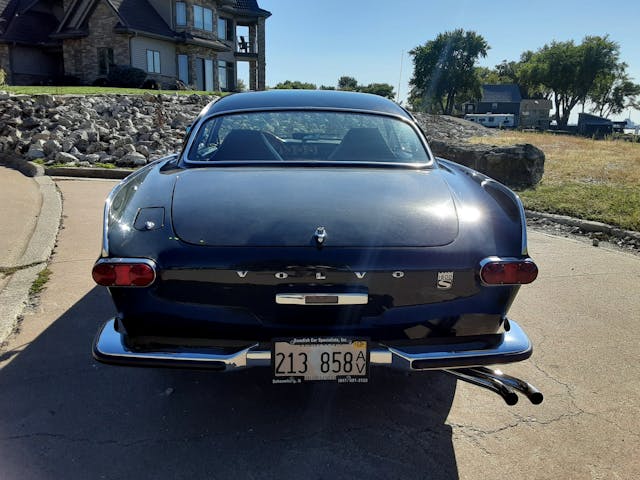
The 1967 1800S was the “M Series,” and the chassis numbers for the model year ran from 21000 to 25499. And one of those is today’s featured cars, owned by my dad. He brought it home on July 30, 2018—a total surprise to me.
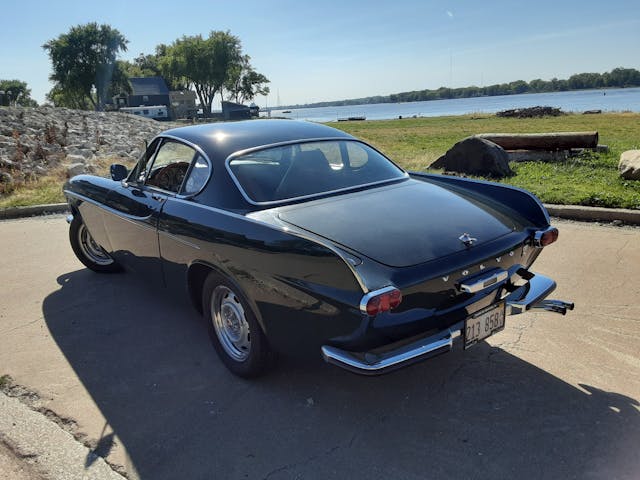
It instantly brought back memories of the ’73 1800ES. It even had the same classic scent of leather, rubber, gas, and oil that I remembered. And it was very pretty in British Racing Green with saddle tan interior. I know, I mentioned that before, but what a great combo.
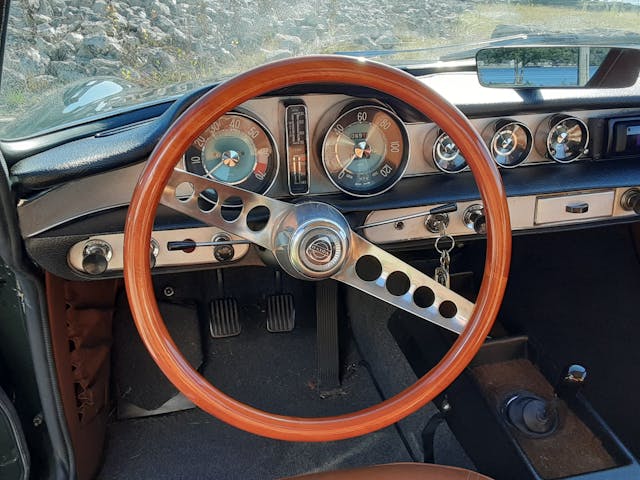
While researching for this story, I read the original paperwork that came with the car, and it was very detailed. It was, believe it or not, sold new by Budd Volvo in Riverside, California, to a Jerry Stotlar. And it was originally red with black leather, according to the records. But wait, there’s more. Apparently that was entered in error, as after I initially started this column, my dad got an 1800 book and decoded the data plate—and it was originally green with saddle tan.

The first plate it had was California VXE 144, and it had its 3000-mile service on November 2, 1968. This leads me to believe it may have been a leftover and sold for a healthy discount, though I can only speculate. Finding all this out was really interesting. You don’t always know the life your car lived before you got it.
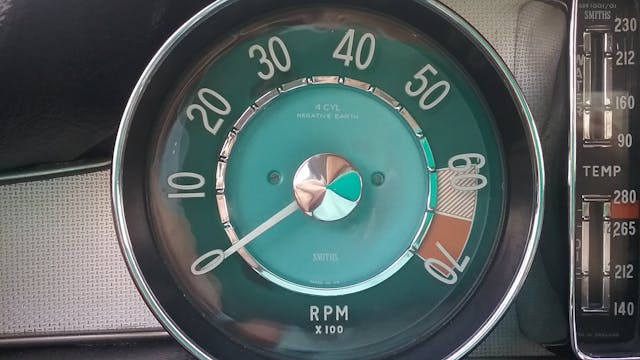
Come 1968, a padded three-spoke safety steering wheel was added, albeit less gorgeous than the two-spoke version on this ’67, with its drilled twin metal spokes. American 1800Ss also got the dreaded tacked-on side marker lamps, which slightly spoiled the svelte, sleek lines.
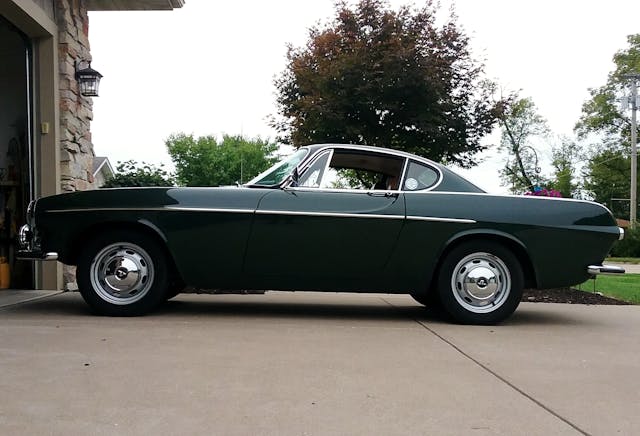
As you can see in some of the pictures, my dad made some slight changes to the car. The 1800ES had the bright chrome lug nuts with the small center cap, and he liked that look, so the “V” hubcaps were removed.
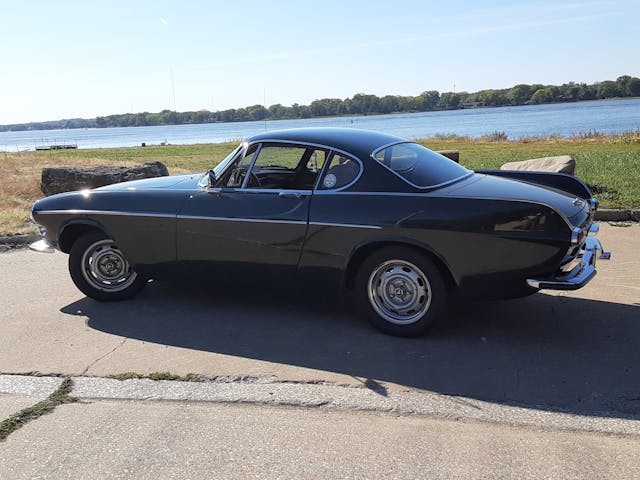
He also added the driving lights to the bumper. But other than that (and a couple reproduction decals), it has pretty much stayed the same, and it’s being driven and enjoyed.

I had been meaning to write about the car earlier, but as it is usually in storage away from the house, I had to time it right. Fortunately, just before it started getting cold, in early October 2023, my father had it out for the weekend, and I managed to talk him into driving it down by the river for most of the pics you see here. While the coupe lasted through 1972 and fuel injection was added in 1970, the 1800ES “Sportwagon” took over in ’72.
The last one was built on June 27, 1973, the end of an era in Volvo history. Fortunately, there are many loving owners today who appreciate these special cars and keep them running to enjoy.
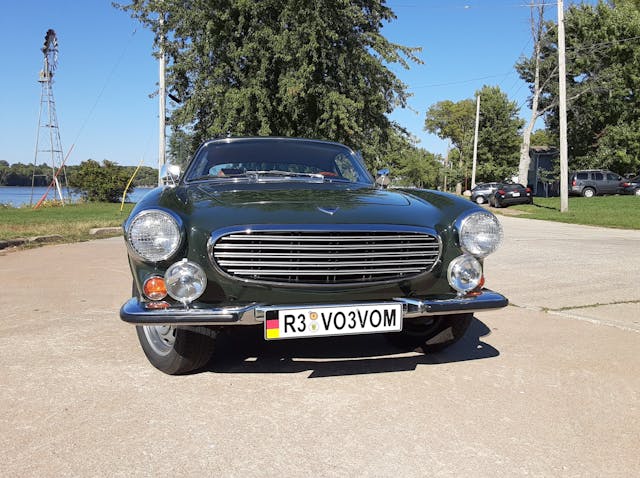
***
Check out the Hagerty Media homepage so you don’t miss a single story, or better yet, bookmark it. To get our best stories delivered right to your inbox, subscribe to our newsletters.
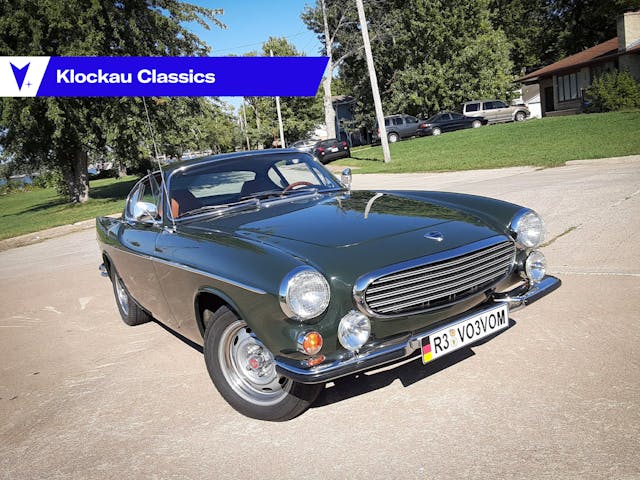
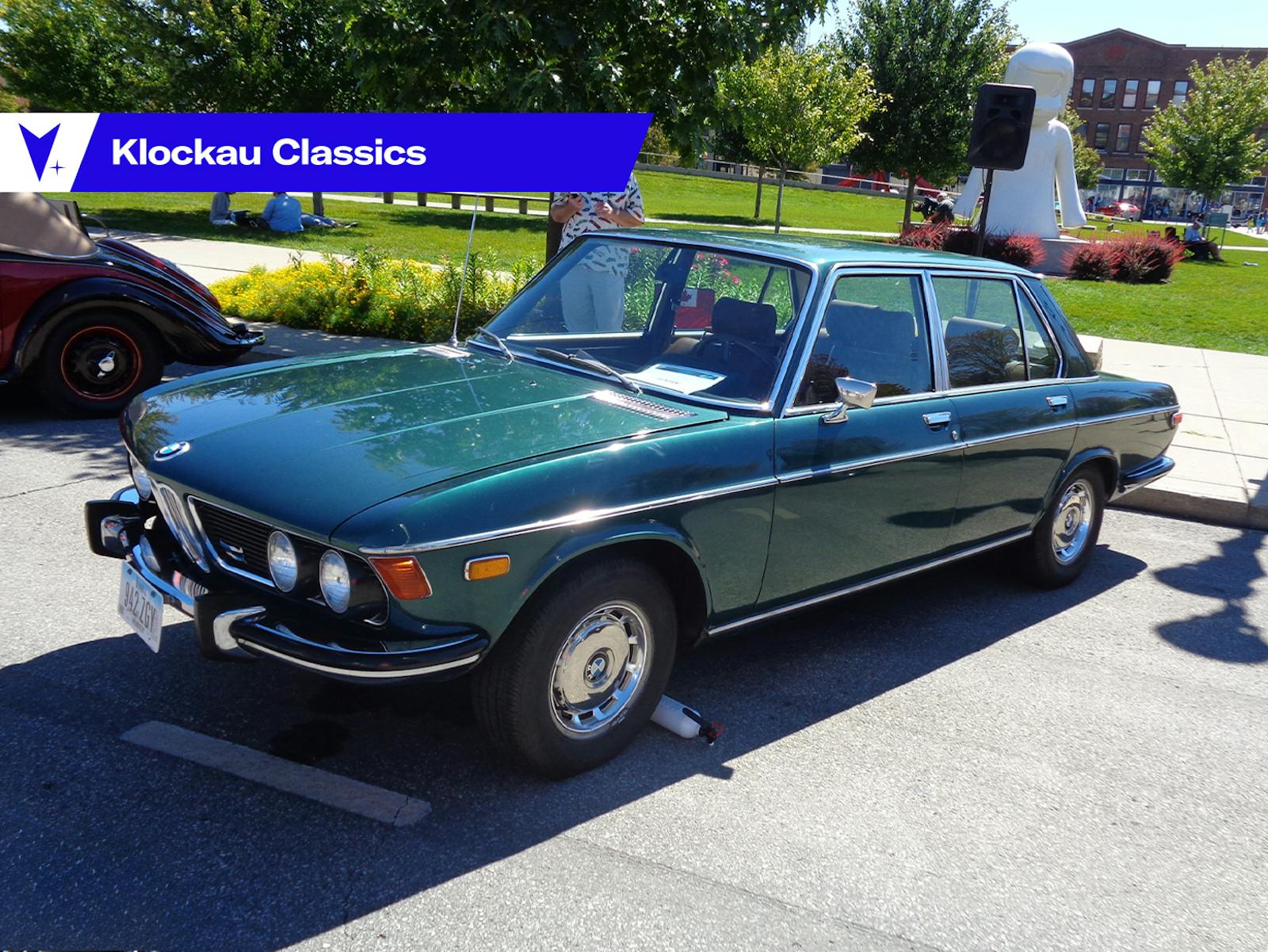

“…and it’s being driven and enjoyed.” Probably the best part of a thoroughly enjoyable article.
One of the BEST ever designs, coupe or wagon, ever made, hands down! Defines the word “timeless”!
My favorite teacher in high school drove a twin, Green over Tan, in the ’70s. I remember he took 3 of us out to lunch in the car, all full size students, that “back seat” was a tough fit sitting sideways. The car fit his “cool guy” character perfectly, and he could be counted on to fish-tail out of the teacher’s parking lot most days. The 1800 was often parked next to another teacher’s yellow Opel GT. A great time for halo cars!
This is the good stuff, looks like I need to rebookmark this site.
Very interesting and fun to see someone I know in the pics!
Very nicely done article – Thanks. I recently parted with my ’61 that I owned for close to 50 years. Still not sure I did the right thing,
I’ve just got to get going on my ’73 1800ES restoration project.
It’s one of the nicest looking Volvo’s ever. Definitely strong 60’s style in that car.
Lots of style and nostalgia, but the article tells nothing about what the car is like to drive.
One of my first cars was a 1963 1800. Tons of bondo and painted with a brush and roller, It nonetheless was an 1800, for all its quirkiness- non functioning taillights, non functional radio, mom functional horn and a slipping clutch. When we took it to the family mechanic to get the clutch adjusted, once he had it up in the air on the lift, he called Dad and I over to look at the Swiss cheese unibody. The worst part was the steering gear box which was only held on by a sliver of steel. His advice? Sell it! And I did.
At one point Dad had a sweet 1970 1800e (?), which when the overdrive started to get testy, he traded it in. On a 74 Vega Gt. At least it handled good.
He later raced an F production 1800 for a number of years in Midwest Council, and some SCCA events, but retired from racing when he slid off the track and crunched the Volvo.
I never cared for the coupe body style, and still don’t; it just looks awkward, with those fins. The wagon version is much better looking, since the long cabin rather effectively minimizes the visual impact of the fins. In the 1960’s, there were so many attractive coupes and hardtops; not sure how they ever sold more than a handful of these.
I was headed home for lunch one day in 1973 when I saw a 1972 bronze/saddle tan 1800ES Sportwagon drive by. I was smitten! I followed it out on the freeway and managed to flag the driver down. He wasn’t interested in selling it, but I gave him my card and told him to call when he was. About six months later he called and reported that he and his wife had ordered matching new Corvettes and something had to go. Two days later it was in our driveway. It was a great road car and we took many long trips with it over the years. It was a delightful Shooting Brake.
I have a 1970 1800 E Volvo in my possession. My father had it in his garage for over 30 years and now I have it. I’m not a big car guy, but it runs in the body it’s in good shape But the interior needs some work on it. It runs and it’s overall a good car it has mostly all the emblems. If anyone would like more information, please contact me and I can send pictures if requested.
My opinion is just the opposite of Rider79 — I think the coupe looks so much better than the awkward looking wagon — and I’m a wagon fan! The big all glass hatch really throws it off to me. The fins are typical early 60s, not out of place at all. The little wagon is definitely a more practical car — luggage/grocery space and a little head room for rear seat passengers. As a 6′ adult I don’t think I could sit in the back seat of the coupe! If I could even get in I’d definitely be cramped.